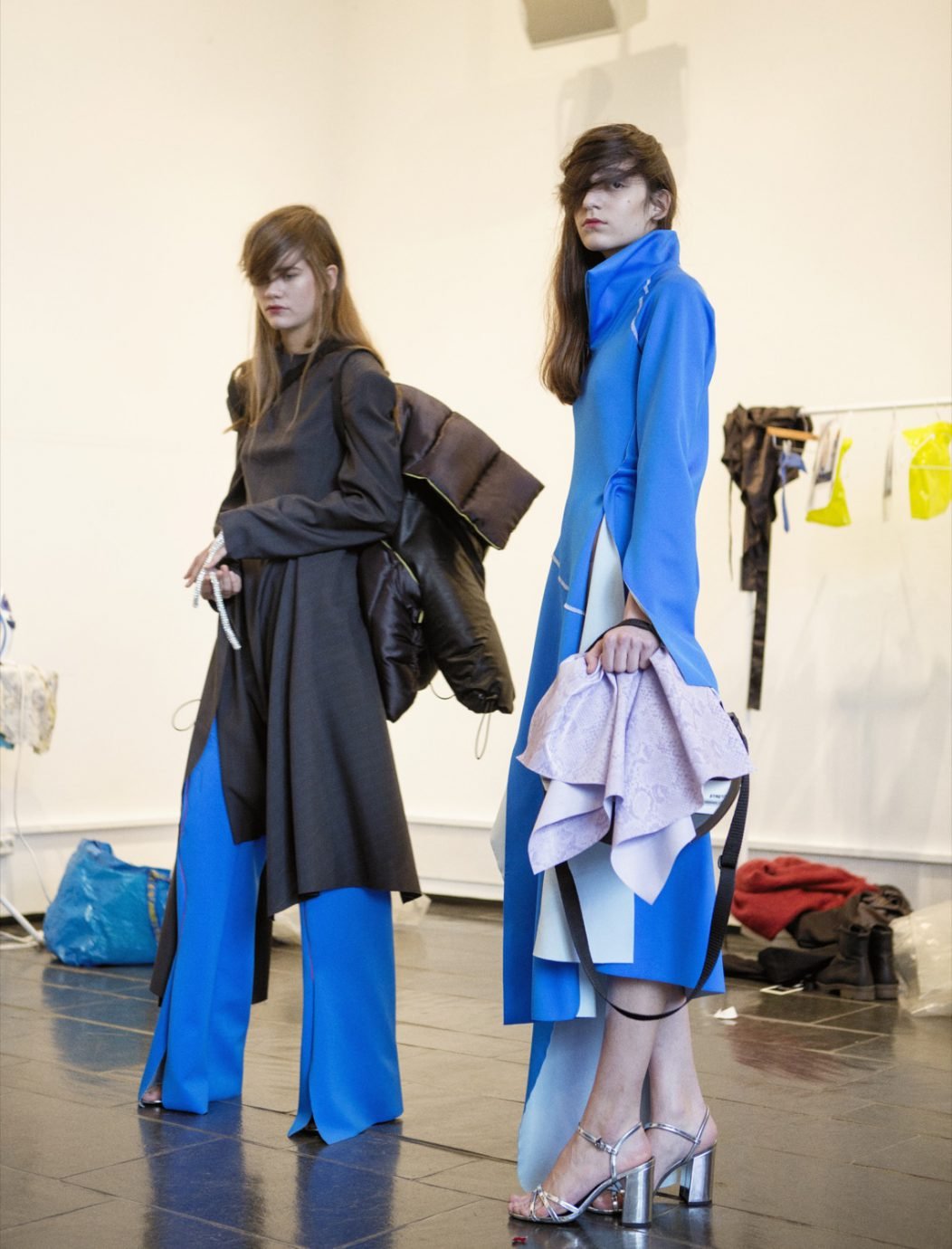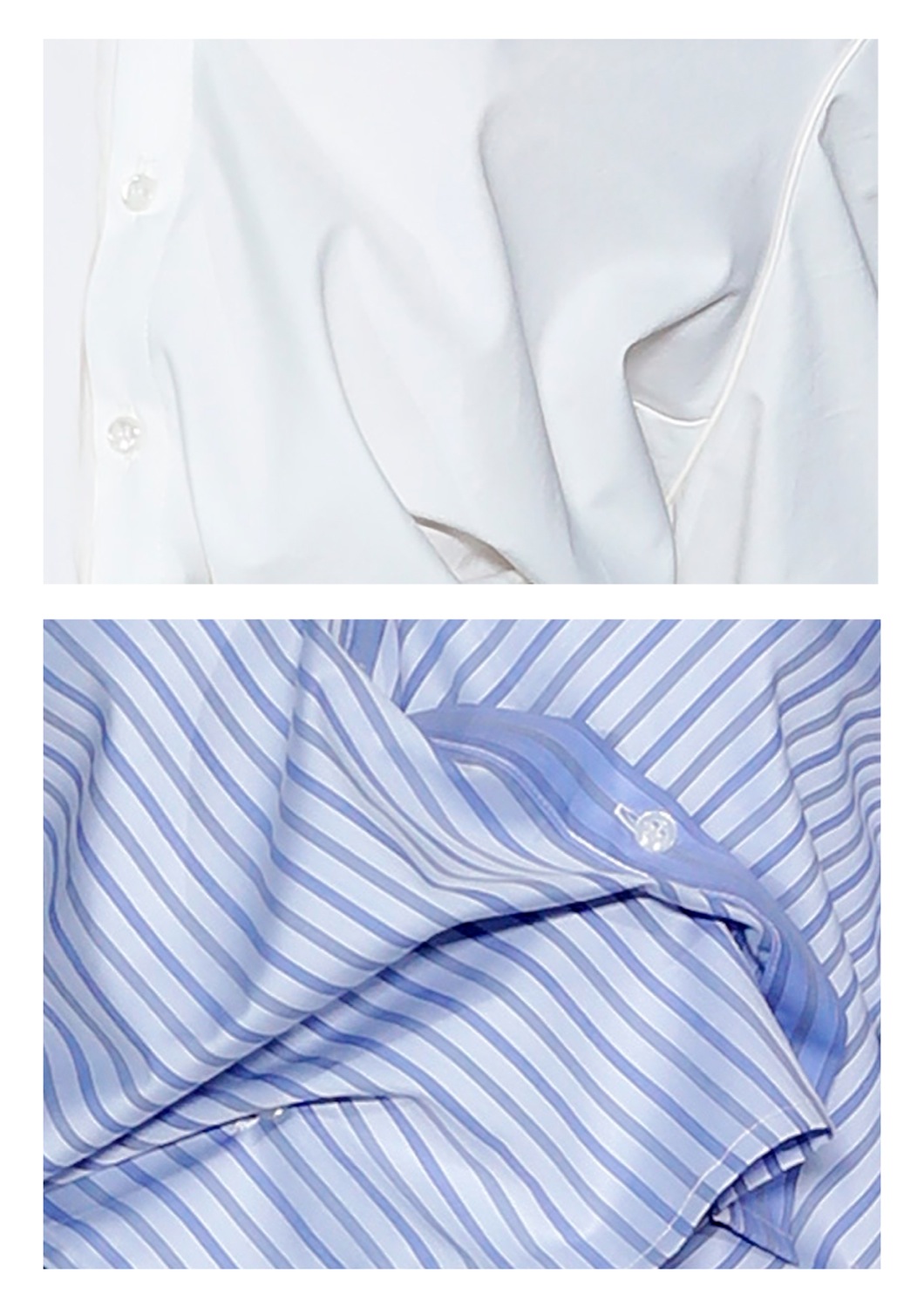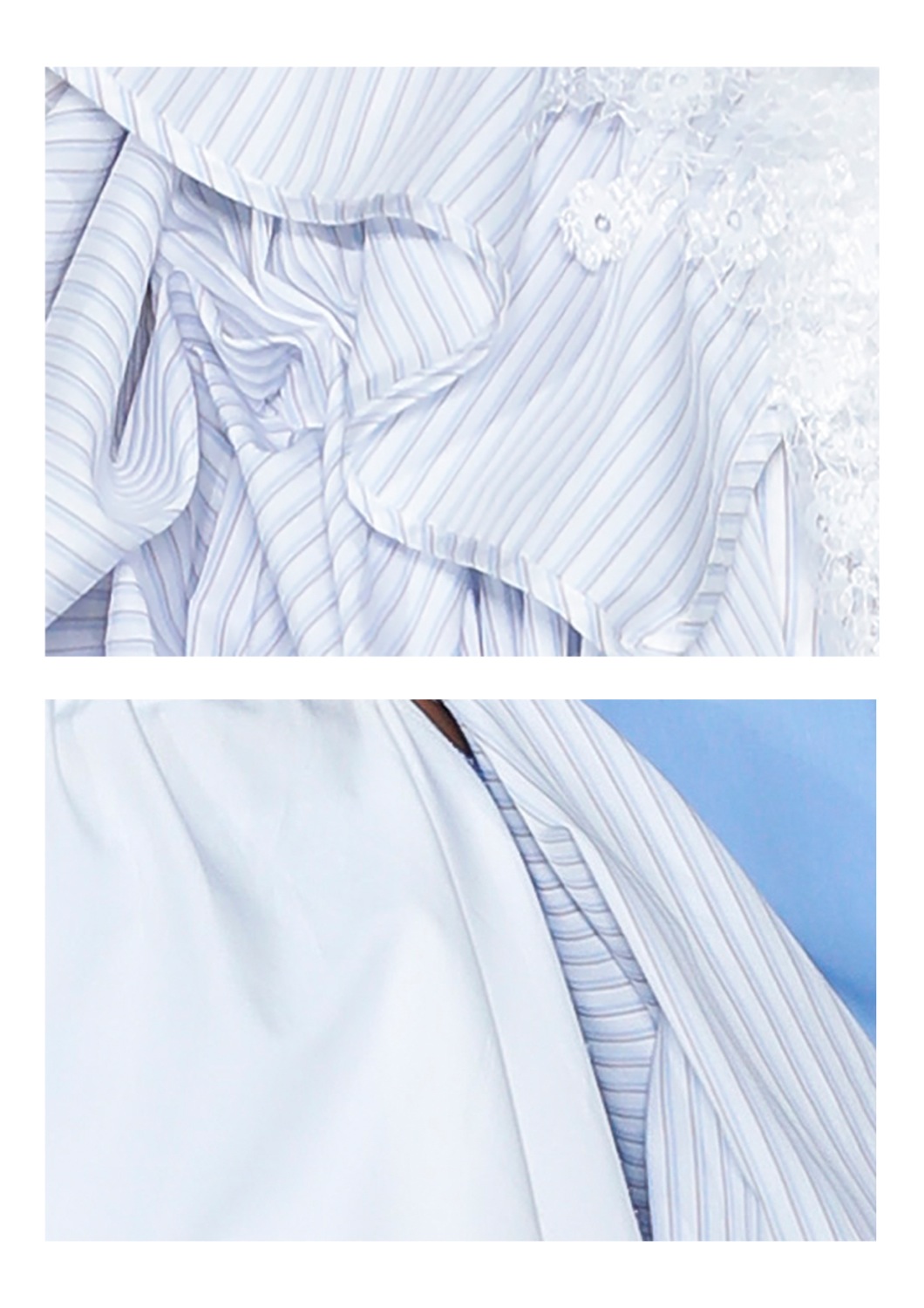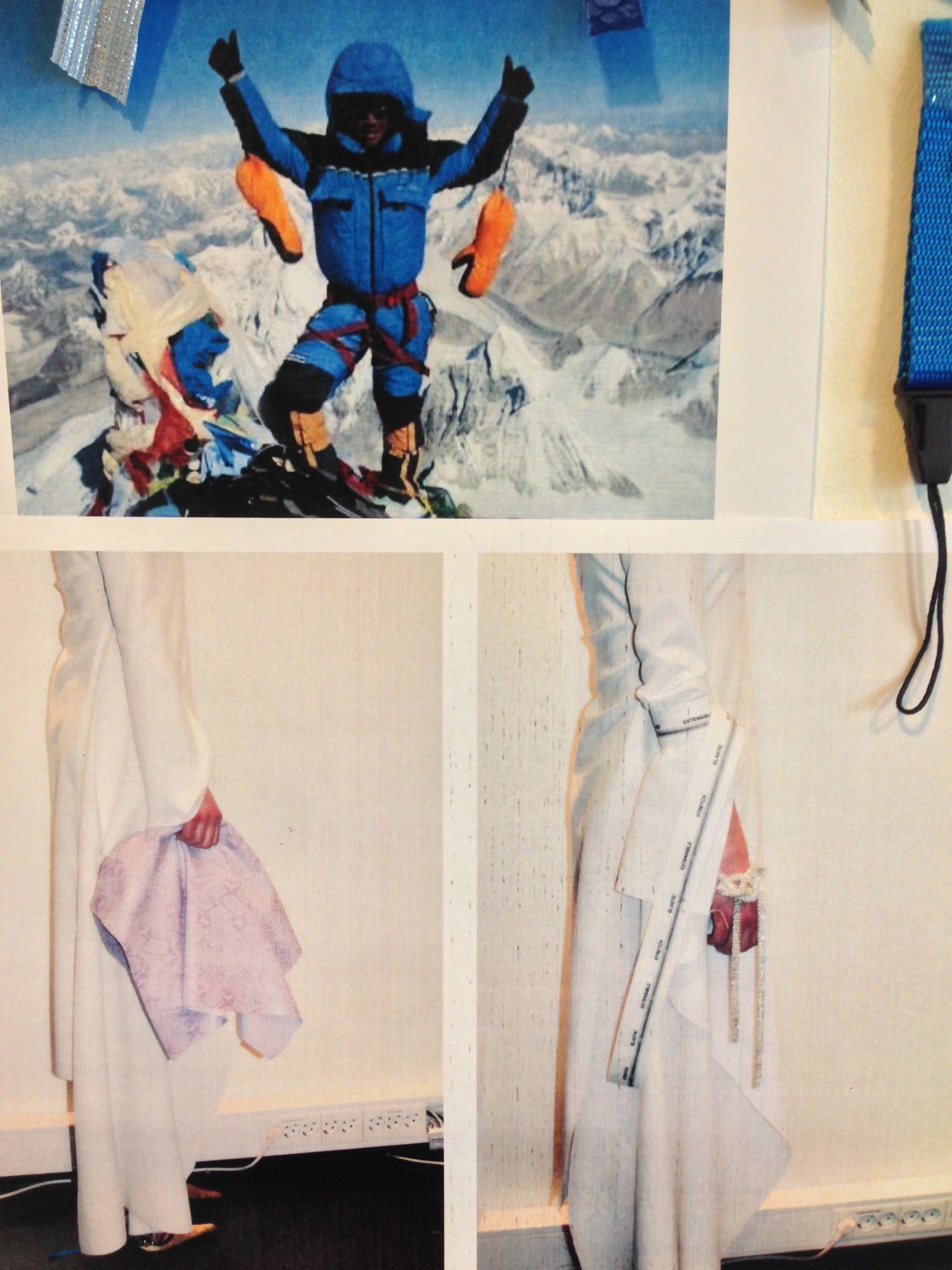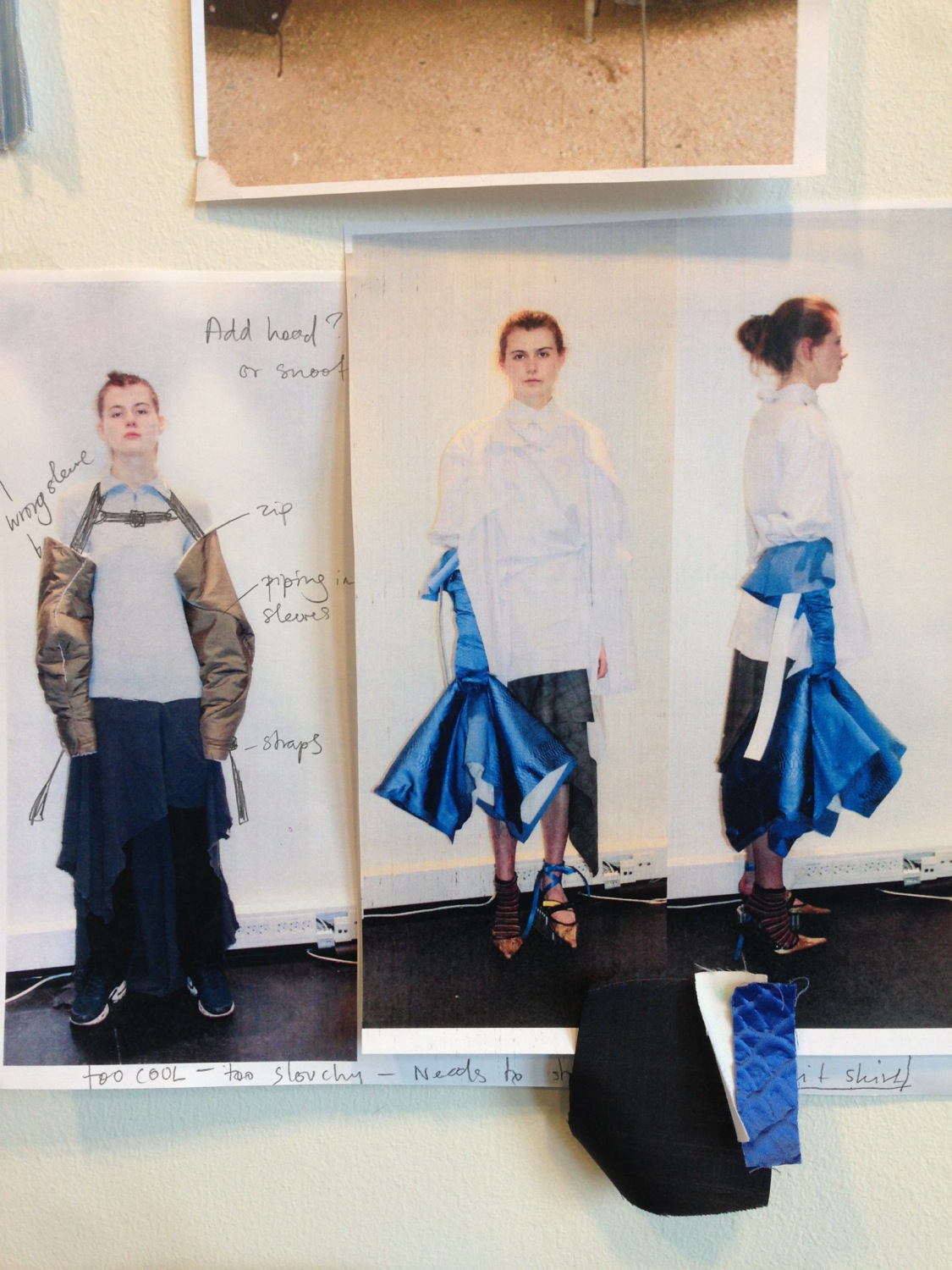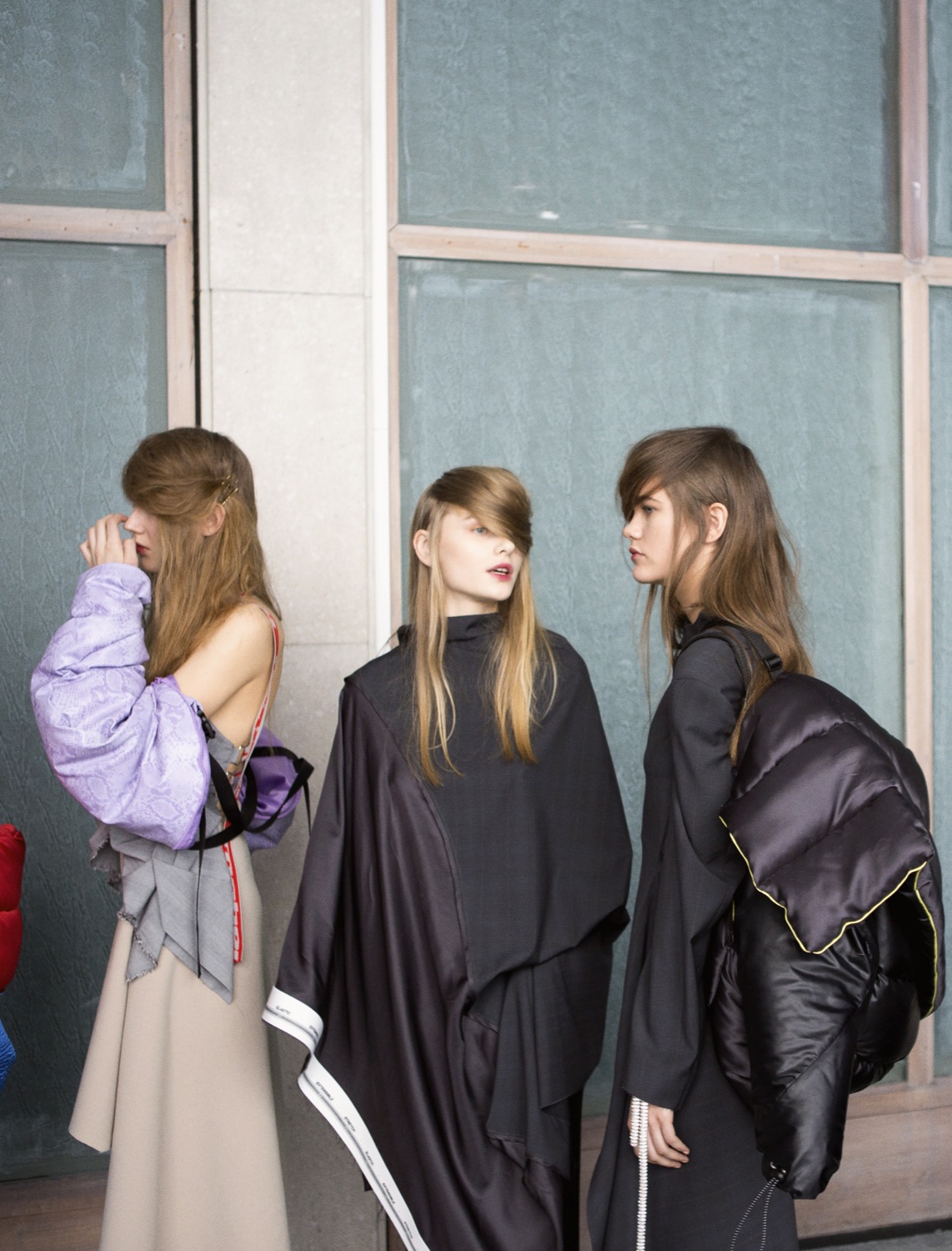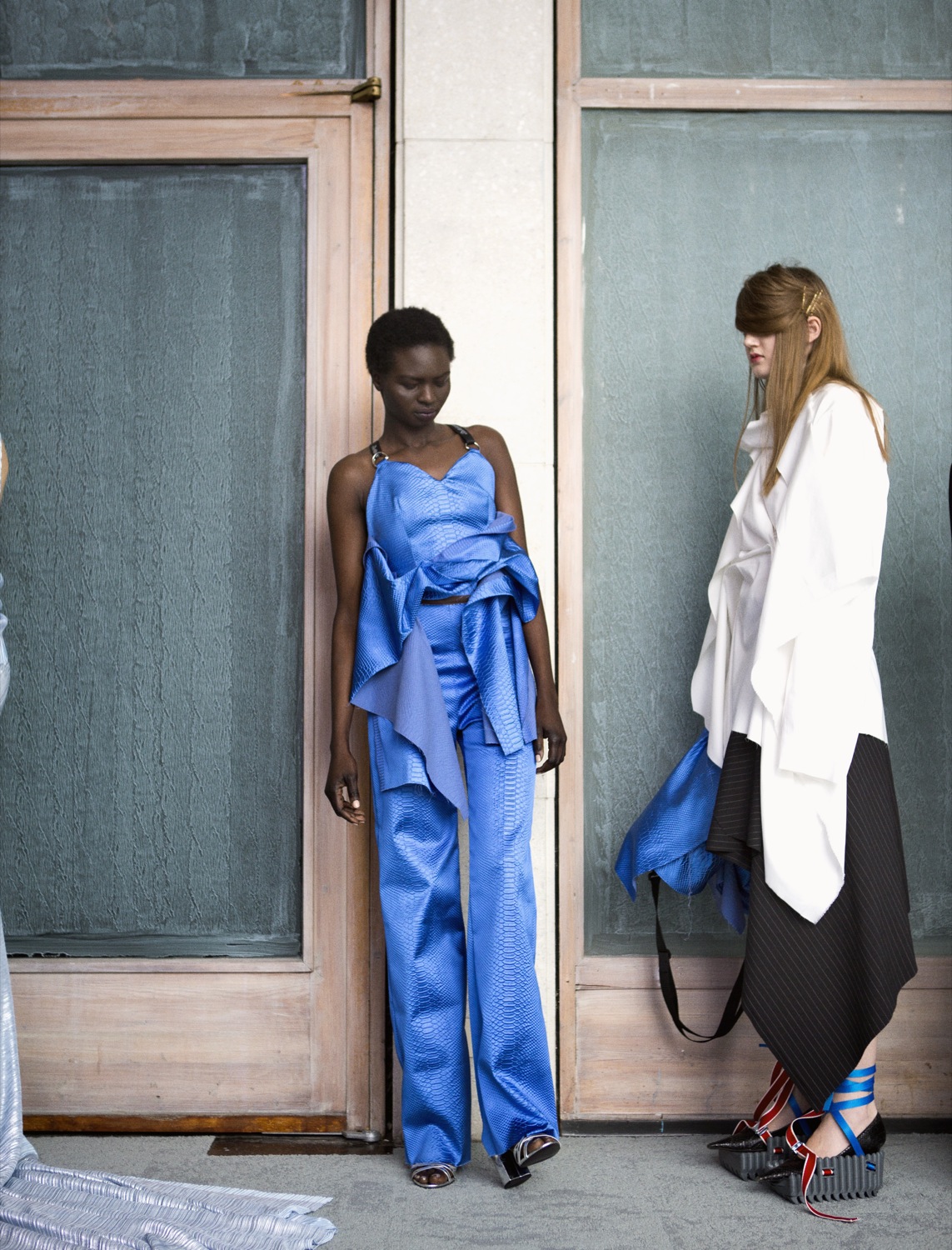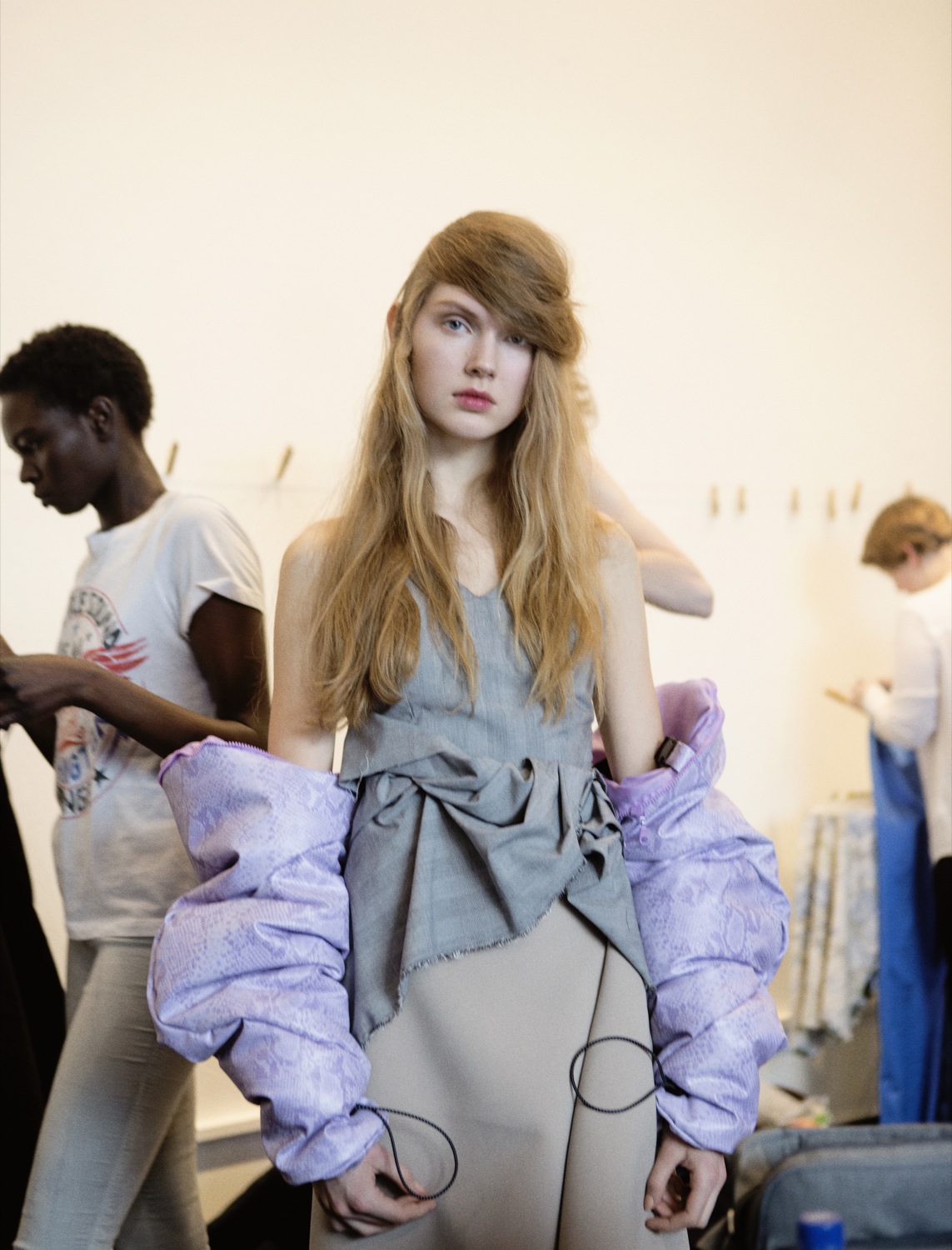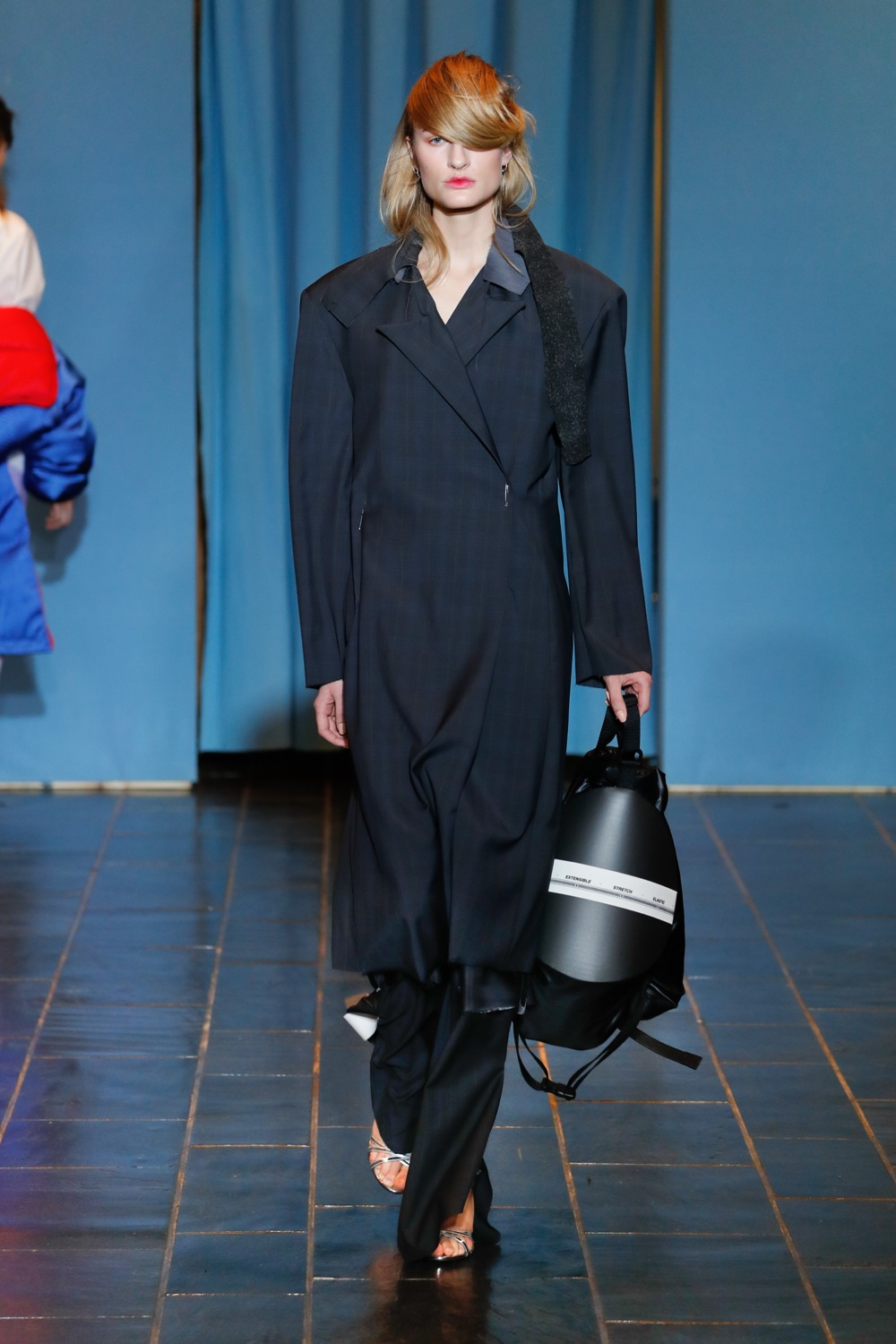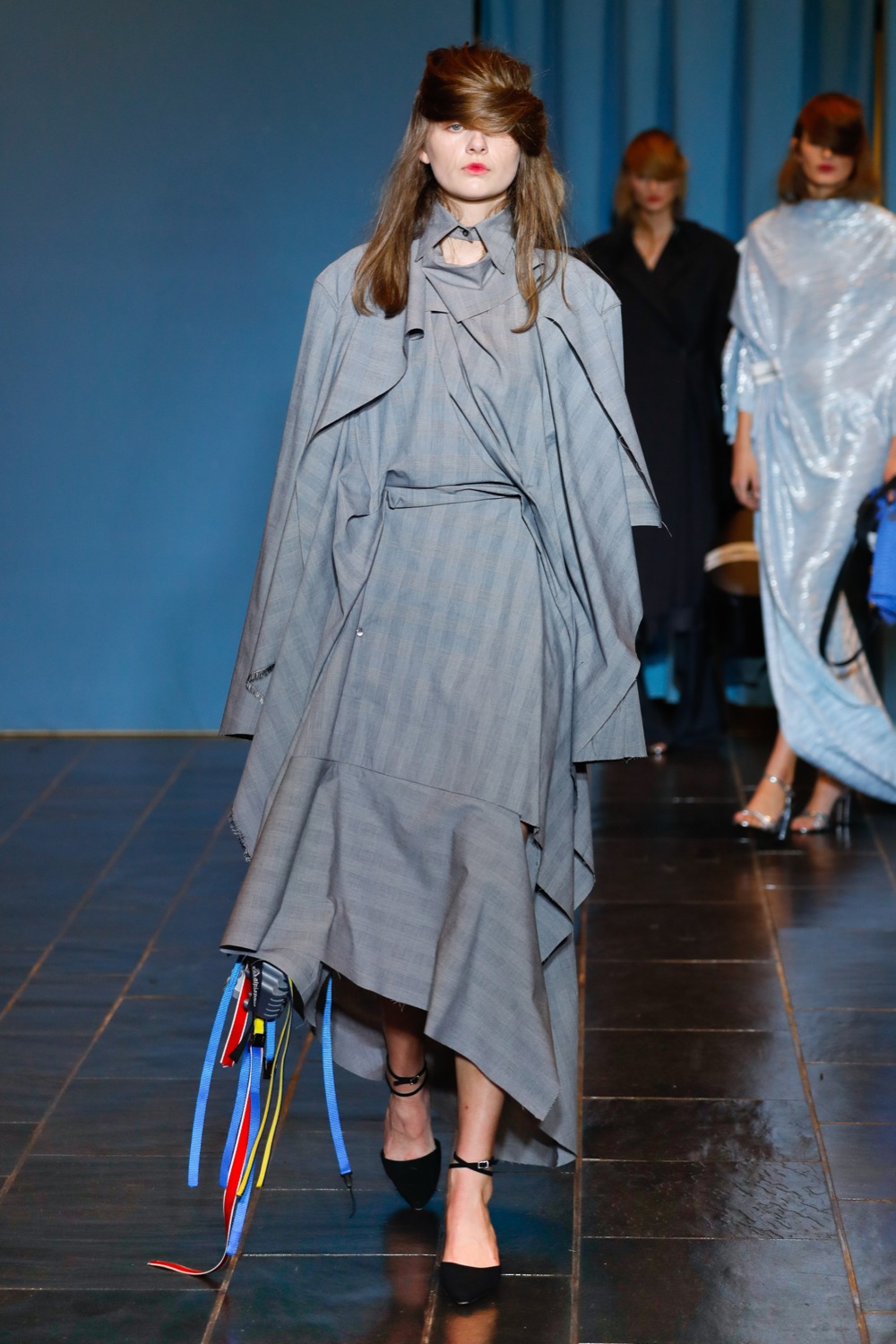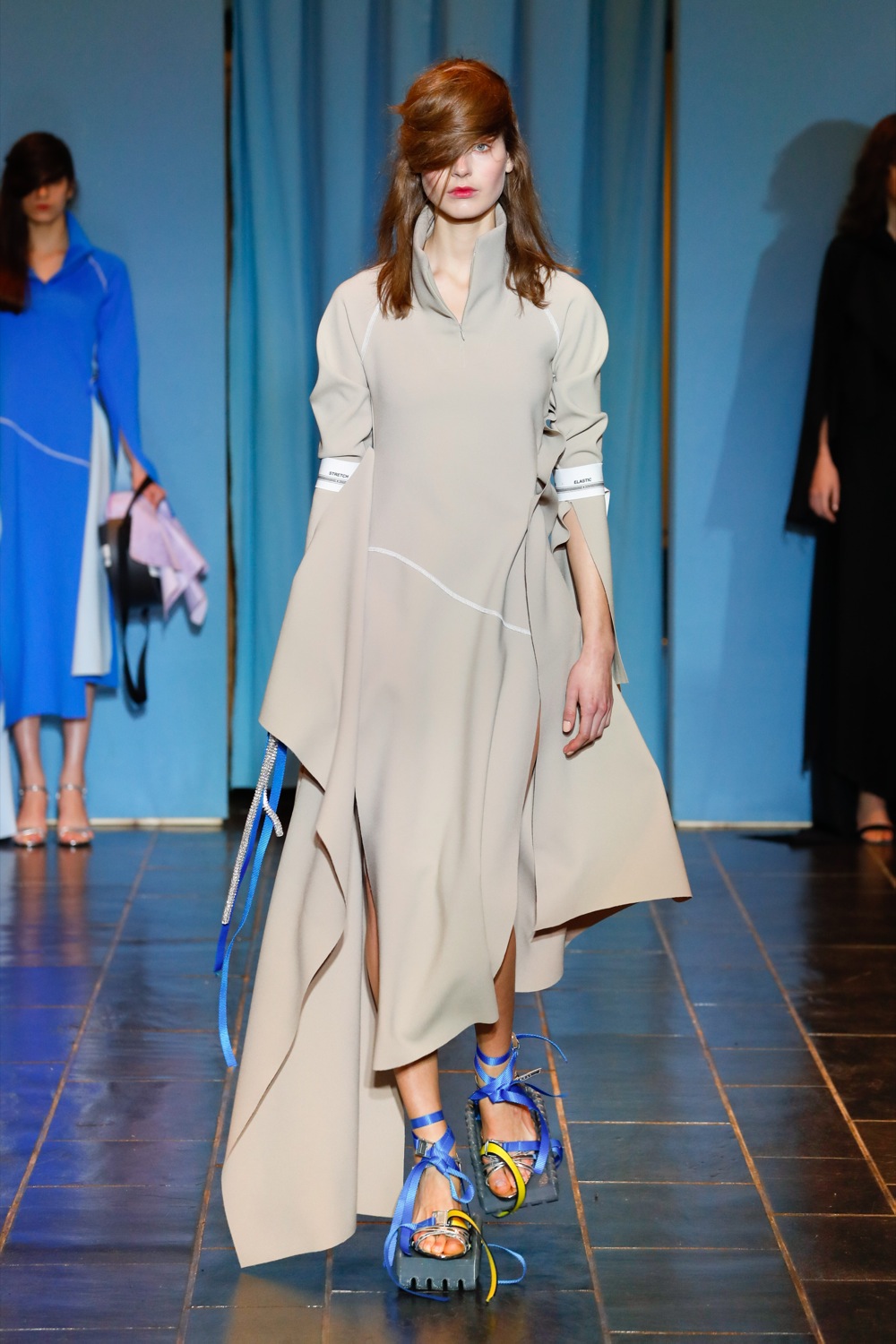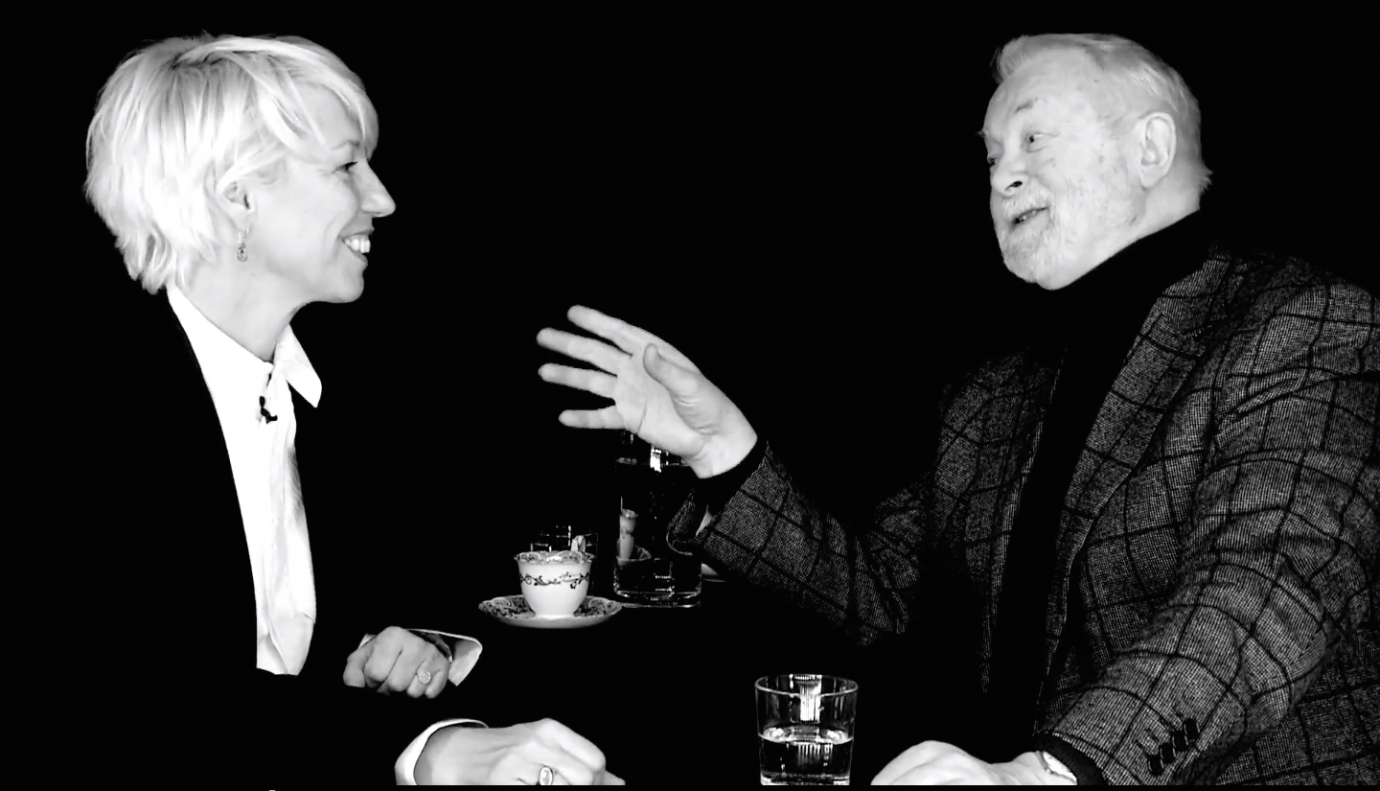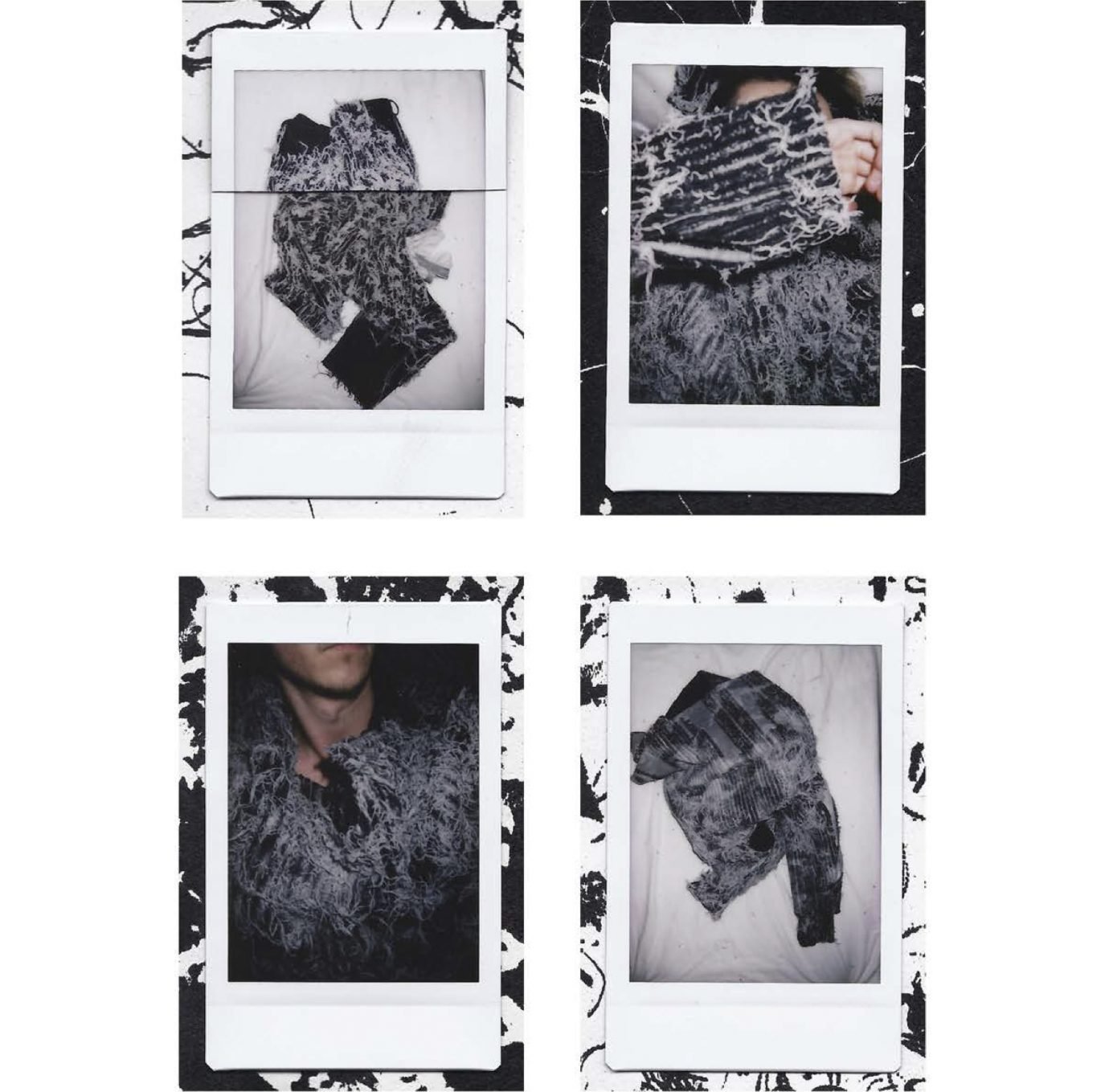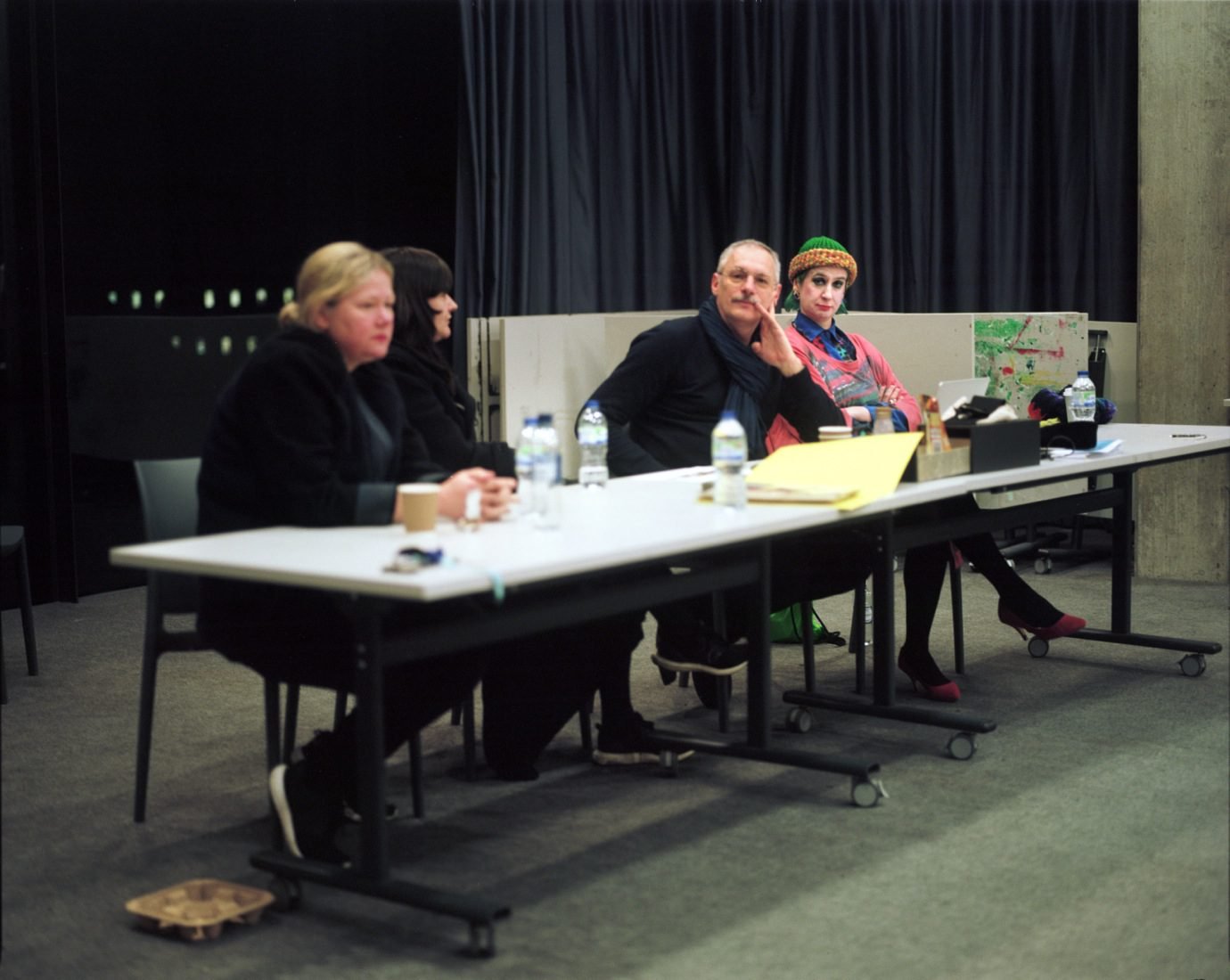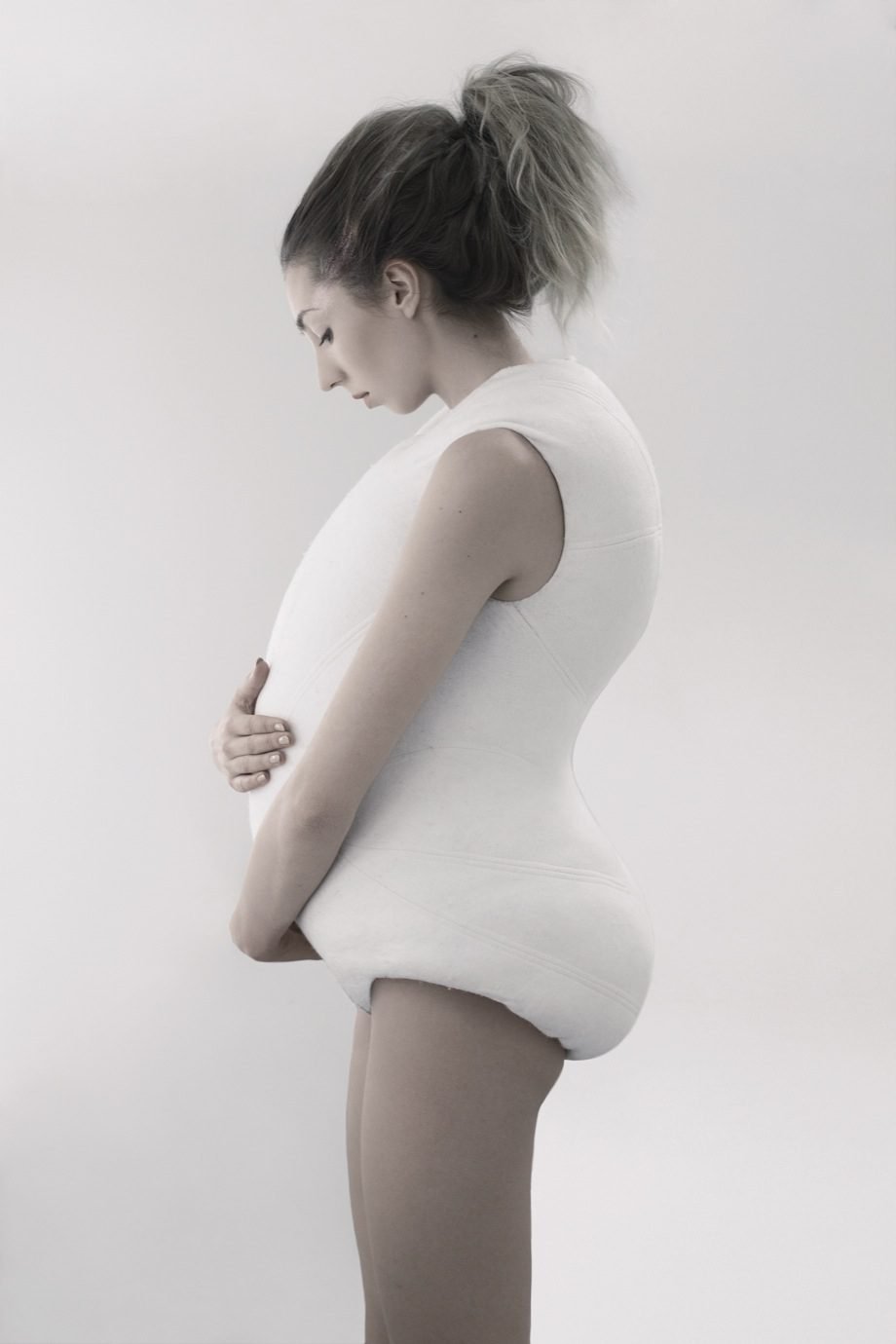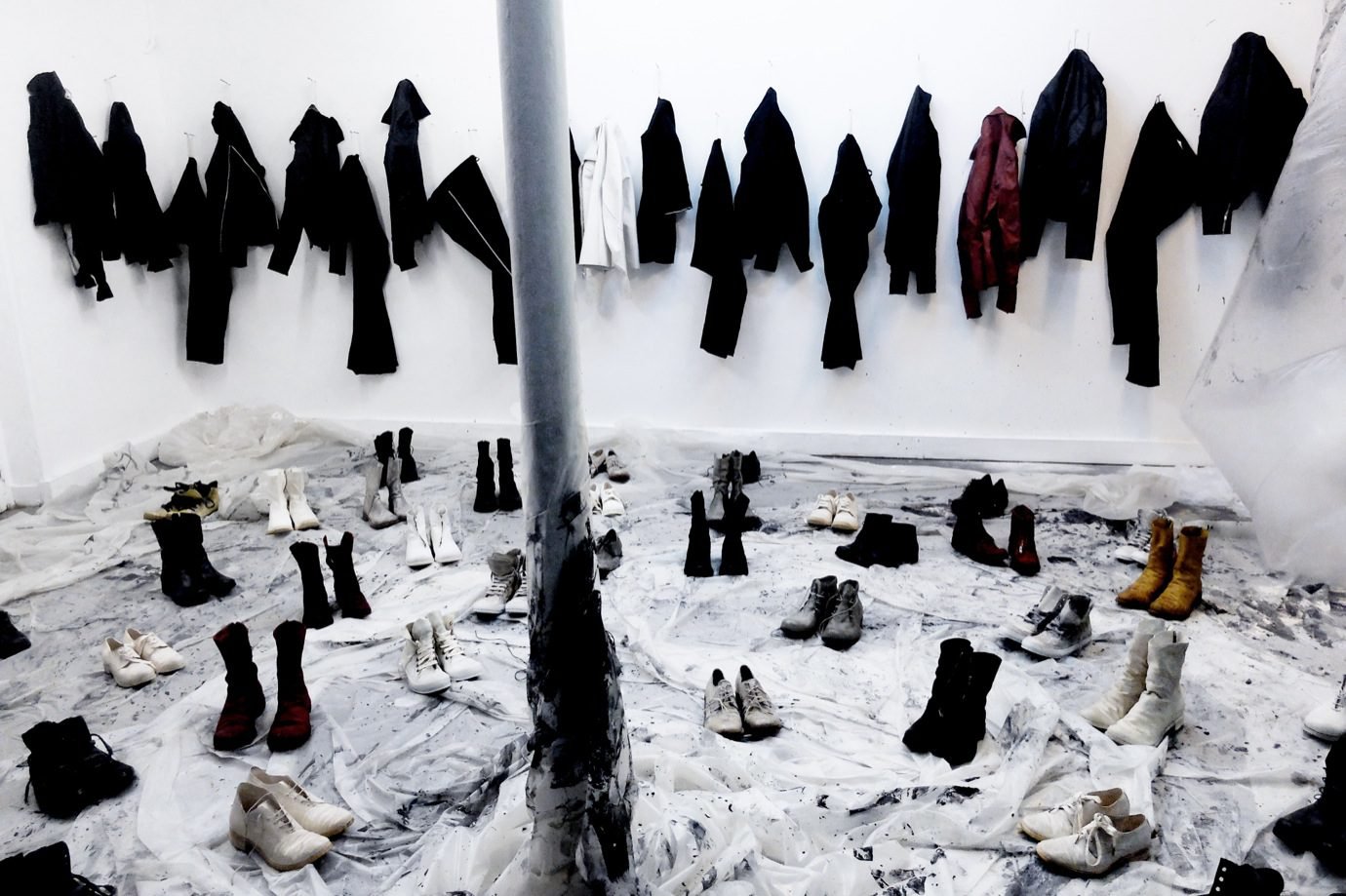“I FIND ‘THE WOMAN’ AND HER POSITION IN TODAY’S SOCIETY EXTREMELY INTERESTING AS A SUBJECT. ‘SHE’ IS MY MAIN FOCUS, ALONGSIDE ALL OF ‘HER’ SOCIAL TENDENCIES.”
It’s been awhile since we’ve caught up with you. Where did you get the idea for your most recent collection, Physis/Techne?
My collection for AW17 came from my reaction to the state of humanity now. Brexit happened and then Donald Trump was elected emphasising the extreme reality that we are living in. I watched Adam Curtis’ Hyper Normalisation documentary and several interviews with Noam Chomsky which highlighted the insecurity and unsteadiness of our time. With this in mind, I looked a lot at extreme wear and gear. Tools that are necessary to survive in extreme activities. For example, ‘’Super-underwear’ that made the base for my ‘Super dresses’. The climbing rope that made it into my ‘Security Bracelets’, the hiking add-on crampons that was the idea for my ‘Tractor Soles’. I wanted to break up the line set in my previous collection; Active City Trotter. I needed to go bigger, bolder, freer, looser, louder. Even angrier.
In the past you have mentioned Gilles Deleuze’s philosophy of ‘the fold’ as an influencer on your work because the theory is relatable to political and philosophical issues of our time. Do fashion and social issues relate in that way to you?
Absolutely. For me it is quintessential. It is how I work, where I get my information from and where I base my research. I find ‘the woman’ and her position in today’s society extremely interesting as a subject. ‘She’ is my main focus, alongside all of ‘her’ social tendencies. I discovered my obsession with drapery whilst doing my MA, and since then I have made sense of this and have refocused my love for the field through making new work in each new collection. This last collection; ‘Physis/Techne’ was actually not only with an emphasis on the woman, but us as a people, us humans, in the world. Today especially I find it hard not to be political and social in any work that I produce.
Now that you’re in the real world of work, is it still as fun as designing as a student?
I love what I am doing; creating and making, but not so much the business part… at the moment I am a one-woman brand and I do everything by myself – that needs to change, so I can focus on what I am good at.
Now that you’ve moved back to Oslo, what do you recognise as the biggest differences between living there versus in London?
The buzz and the energy. I miss that from London. But I don’t miss the stress from the city. There’s more space here. I grew up in Holmlia in Oslo with my four younger sisters. When I was fourteen I moved to Lillestrom with my family and then to Nice when I was 18 for a year. This all took place in the years before I enrolled as a BA Womenswear student at CSM, where I would then stay on to do my MA. After graduating, I started my own fashion practice and moved back to Norway in 2015 where I established my practice back in Oslo. Oslo is where I was born but I feel like London is my city. I go back often but struggle to compare these places because they are so extremely different. Just look at the sizes, mentality, the environment..
Where in Oslo are you and what are you wearing?
Right now, I’m in my studio in Tøyen. It’s dark out right now but during the day I can see the Munch Museum and Toyen School from my window. I like to walk around in Barcode, Bjørvika and Sørenga because it gives me the feeling of something being controlled whilst constructed yet is unknown. I’m wearing a navy blue fitted shirt, wide silk/wool washed black trousers, a green army outershirt and pointy Chelsea boots.

